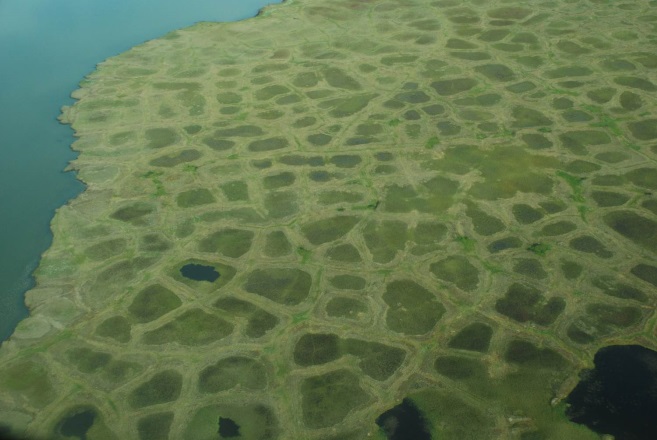

NGEE Arctic
Next-Generation Ecosystem Experiments
Advancing the predictive power of Earth system models through understanding
of the structure and function of Arctic terrestrial ecosystems
Potential carbon emissions dominated by carbon dioxide from thawed permafrost soils
Potential carbon emissions dominated by carbon dioxide from thawed permafrost soils
An international team led by Northern Arizona University scientists and involving a number of NGEE Arctic researchers, used two meta-analyses to investigate the greenhouse gas release from soils sampled from across the permafrost zone and warmed in laboratory incubations. The first analysis focused on the amount of carbon released in response to warming, while the second analysis focused on the difference in the relative amount of carbon released as carbon dioxide or methane under aerobic or anaerobic soil conditions. Potential warming of 10°C increased total carbon release by a factor of two, and even when taking into account the stronger warming potential of methane, total carbon release was greatest under aerobic soil conditions. The implications of these results are that drier soils may provide a larger, positive feedback to global warming than wetter soils. The NGEE Arctic team (Iversen, Graham, Norby, Sloan, and Roy Chowdhury) contributed multiple data sets to this international effort. Phase 2 of the NGEE Arctic project is focused on addressing some of the key questions raised by this research. For example, where, when, and why will the Arctic become wetter or drier, and what are the implications of climate forcing? How should these processes be represented by mechanistic models of the Arctic?
Rapid warming in the Arctic is leading to the thawing of carbon-rich soils that have been permanently frozen for millennia. The release of greenhouse gases from thawed permafrost could increase the rate of global warming, but this depends on the amount of carbon released into the atmosphere, and whether carbon is released as carbon dioxide or the more potent greenhouse gas methane.
Across the Arctic, the total amount of carbon released from thawing soils, and whether the carbon was released as carbon dioxide or methane, was related to whether soils were drier and aerobic or waterlogged and anaerobic. Total carbon release, even when taking into account the stronger warming potential of methane, was greatest under aerobic soil conditions, indicating that drier soils may provide a larger, positive feedback to global warming than wetter soils.
Permafrost thaw creates a fragmented landscape of drier and wetter soil conditions that determine the amount and form of carbon (CO2 and CH4) released to the atmosphere.
